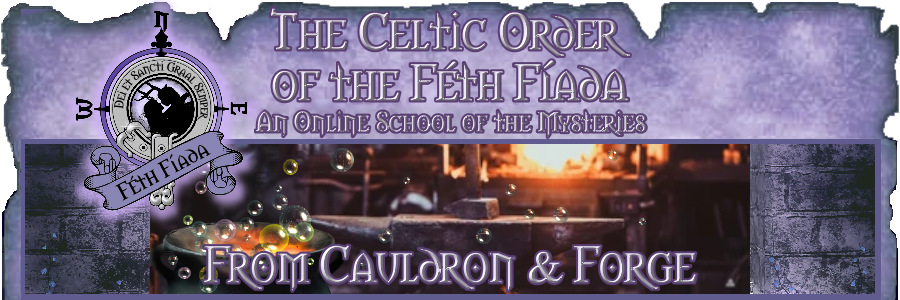
Many (if not most) Pagan rituals are extremely poorly written (and that’s not just my own humble opinion, by the way, but one shared by many Pagans). That’s because the people writing them are not usually professional writers, or even amateur writers. So they frequently largely lack even the most fundamental knowledge and understanding of the elements of narrative writing: theme, characters, archetypes, symbolism, setting, time, plot, conflict, resolution, point of view, tone, and style. Rituals also need another element: mystery. We are, after all, working with the Mysteries.
As Pagan Alder notes in “Writing and Evaluating Rituals and Pathworking”:
…it may not seem all that logical at first to instruct newcomers to magic and the Craft to read up on mythology, legends, folklore, archetypes, symbols, fairy tales and a host of other things. But at this point you may actually see why. The power in a ritual, the force that creates the link, is of an archetypal and symbolic nature. Symbols, by their very nature, have different levels of reality to them. Archetypes too exist on more than one plane at a time. Mythological themes are found throughout all cultures, and they too are more than stories. Legends, although often the result of real-life events, have grown into the misty world of myth as well, linking our world to the world of Shadows (see where the name of our Book came from?).
So a Hallowe’en ritual that says in essence “The plants have died, the harvest is brought in, it is time to get the winter clothes out” is not a good example of a ritual. A Hallowe’en ritual that portrays the Descent to the Underworld, using any myth you happen to like, is a good example. A Harvest ritual too should be more than saying thanks. Whether you make a corn dolly so that the spirit of the corn can survive, or enact the John Barleycorn song is up to individual taste. But the essence of a good ritual is that there is a major symbolic or archetypal element in it.[1]
Pay especial heed to that last line — simply because that’s one of the primary means of helping to develop the Mystery element, too.
Further, it’s not just enough to grasp the elements of narrative writing; you also then need to be able to arrange them into a cohesive, coherent structure that actually accomplishes whatever it is that you intend your ritual to achieve.
As Pagan John Halstead observes in “10 Signs You’re Half-Assing Your Pagan Ritual”:
All the time, more and more people are being drawn from Neo-Paganism to devotional forms of polytheism. And that’s fine, but you have to wonder why people aren’t finding their home in Neo-Paganism any longer. I think a big part of the reason is that so many of our rituals just suck.
It’s no coincidence that people have started referring to Neo-Paganism as ‘generic Paganism’: Our rituals fail to connect us to anything larger than ourselves, they fail to communicate with our deeper selves, they fail to awaken us to mystery and wonder, and they fail to inspire us to action. So, it’s no surprise that people go looking elsewhere for what they need.
Devotional polytheist rituals work because they take themselves seriously and they strive to connect with something beyond themselves. But ritual does not need to be devotional to do this. It need not even invoke deities to be powerful or transformative. But it does need to put us in connection with something bigger than ourselves — whether that be the Earth itself, the wider Cosmos, the community of more-than-human beings, our deeper Selves, or even just one another. Good ritual takes us out of our little isolated egos and expands our souls.[2]
As both a highly successful New York Times bestselling writer for over thirty years in my mundane life before retiring and a polytheist in my ongoing magickal life, I couldn’t agree more with Halstead. Some of my chief aims, in fact, when writing rituals are to connect with something larger than myself, to explore mystery and wonder, and to inspire action.
That’s why I’ve spent so much time over the course of my life investigating the Festivals, making copious notes on them, and also, in many cases, writing outlines for my rituals. My outlines are rarely ever highly detailed. But the fact is that because I keep so much information both in my notes and in my head, I don’t often need an outline that is anything more or less than a list of all the straight, basic aspects I want to cover in my celebration, ordered in a way that makes sense to me and that enables the smooth, logical progression of my rite. Normally, I will also jot down points that I want to expand on, because of their importance and potential for illumination. I want to know what each ritual might involve, how it might harken back to ancient times, and yet how it might also, simultaneously, be brought forward in a significant and meaningful way into the here and now.
Why do I want to figure out how best to do all that? Well, one of the reasons why is because it’s crucial in narrative writing to “ground” your audience in time and place, just as we connect with an energy source and charge ourselves before a ritual.
If your Solar or Earth Festival doesn’t contain any of the time and place elements that let us know which particular Festival of the Wheel of the Year we’re actually celebrating, if we don’t know (without your saying so) whether it’s Imbolg or Lugnasad, Beltaine or Samain, if your rite could essentially be “picked up” and then “set down” again (i.e., performed without revision) at any other time and/or any other place than what you actually intended, then it has failed at the most basic foundational level.
If your Full “Sunshine Pours” Moon Lunar Festival invokes the Goddess Grian (a Goddess symbolic of the pale, weak winter sun, rather than the bright, strong summer sun), then — unless you have some very specific and telling plot/conflict reason for such an invocation — your ritual, too, has failed at the most basic foundational level, simply because you’ve invoked a Winter Goddess into a Summer Lunar Festival, thereby, again, shattering the time element.
The lack of time and place grounding is just one of many ways in which rituals can fail. Well-written rites are thoughtful and complex from the standpoint that every single element of narrative writing, as well as the element of Mystery, has been competently and effectively addressed within the celebration.
Pagan G. Gordon Edwards, in “Writing Your Own Rituals for the Sabbats,” has a short but sweet checklist for rituals:
●Have you ever actually performed these Rituals?
●When you look at a Ritual and compare it to the Sabbat it celebrates, are you able to see how the words and actions in the Ritual correspond to the subject [i.e., all the various elements] of the Sabbat?
●Did you feel a real connection to deity during the Ritual?
●Did you feel good and content with your actions at each stage of the Ritual you performed, and did you feel like you had done enough when the Ritual ended?
●Did you find the Ritual to be spiritually satisfying?[3]
I think that’s one of the best and most pertinent short checklists for ritual writing that I’ve ever come across.
Indeed, all professional and many amateur writers have various methods, aids, routines, and checklists that assist them with the writing process (in addition, of course, to the fact that at some point, you simply have to sit your butt in a chair and actually write!). Some of these are physical, like story boards and vision boards. Thus, for me, assembling “Festival Kits” for myself often serves as both a physical aid and a mental inspiration for my rituals. For me, they function as both a story board and a vision board (not to mention the fact that I’ll have a beautiful ritual tool, to boot, once I’ve finally completed them).
Good rituals are challenging to write. Still, if you never challenge yourself to tackle difficult tasks head on, to exceed the bounds of your limitations, to dive deep beneath the surface waters to reach the still, dark waters below, then you never really push the envelope of your own potential and possibilities as a human being; you never really grow as a person in life.
One of the things that has always especially inspired me in this regard are two lines from a poem — “Andrea del Sarto” — by Robert Browning: “Ah, but a man’s reach should exceed his grasp, / Or what’s a heaven for?”
Blessings!
APs Rhianwen Bendigaid
Footnotes:
[1] Alder, “Writing and Evaluating Rituals and Pathworkings.” Silver Circle. Web.
[2] Halstead, John, “10 Signs You’re Half-Assing Your Pagan Ritual.” Naturalistic Paganism. Web.
[3] Edwards, G. Gordon, “Writing Your Own Rituals for the Sabbats.” Web.










